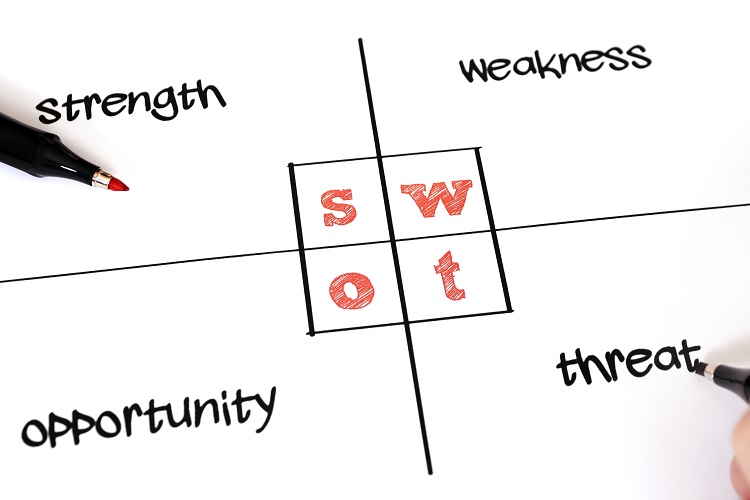How a SWOT Analysis Can Help Your Business

SWOT analysis in not just another acronym for big data or IIoT. Instead, it is a great way to evaluate the current state of your business. I have been using SWOT analysis since the mid 80s, but it has been around since the 60s.
A SWOT analysis is a study performed by an organization that identifies its internal strengths and weakness and then looks at its external opportunities and threats. The acronym SWOT stands for strengths, weaknesses, opportunities, and threats.
Performing a SWOT analysis is very simple. You don’t need to buy sophisticated software or hire a consultant. All you need to do is set up a meeting with key stake holders within your organization. This could include department managers or employees, depending on the size of your organization. A piece of paper or a whiteboard will work just fine for the exercise.
Start by identifying the strengths of your organization.
The strengths you identify should be internal items that directly relate to your business. What does your business do well? What do your customers and competitors think you are good at? What unique skills or technologies do you have? What do you do better than your average competitor? Answers could include things like on-time delivery, high-quality products, first to market with new products, or the ability to customize your product for customers.
Now, move on to your weaknesses.
Again, these are internal items that directly relate to your business. What causes your business to receive customer concerns or complaints? What does your competition do that you are not doing? What technologies are you not currently using? What can your business improve? What do your customers and competitors see as your weaknesses? Your weaknesses could include digital advertising such as social media or email marketing, predictive maintenance, r capital investment in new manufacturing technologies such as the Internet of Things (IoT), long lead times, no new products, or your limited ability to customize products for your customers.
Next, ask what opportunities you have to grow your business.
The opportunities you write down should be external. What new trends are surfacing in your market? What regulatory or governmental changes are you aware of? Your opportunities could include new technology like IIoT, changing social patterns for your customers, stricter requirements for clean air, or mandates for workplace safety improvements.
Last, tackle the tough part—threats.
What external factors threaten your business? What could cause you to lose some or all of your customers? Is there new competition entering your market? What about succession planning or ensuring new talent is found and retirees are replaced on time? Many manufacturers write down threats such as no new products on the horizon, no marketing, natural disasters, or regulatory changes that could increase operating costs or even cause closure.
When performing a SWOT analysis, you have to be objective. Ask yourself the tough questions and challenge the answers. If you put a biased effort in, the results will not give you a true overview of what you are good at and what you need to improve.
Write each answer in a box labeled with the appropriate category title. Start with the strengths, then weaknesses, move on to opportunities, and finally the threats. Pay attention as you complete the exercise. A strength can also be a weakness, and an opportunity a threat. For example, “We are the only business doing this kind of work.” That can be great for business, but a competitor can pop up and cause you to lose customers.
Once you have completed your SWOT analysis, you should develop ideas and plans to continue to improve on your strengths, turn weaknesses into strengths, take advantage of opportunities, and reduce or eliminate threats.
You can use a SWOT analysis to not only improve your business, but it is also good for new product development, implementation of new manufacturing processes, or starting up another plant or operation.
SWOT is an excellent tool to take inventory, identify weaknesses, map out opportunities, and identify, manage, and eliminate risk.
To help you get started, here is a SWOT Analysis Worksheet you can try out. know it will help you develop your business even further.
An insurance company that cares about you and insuring the things you wish to be insured.
Get a Quote> Find an Agent>

